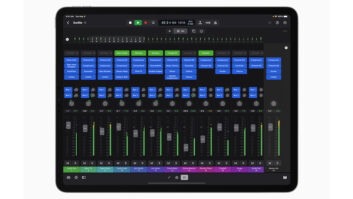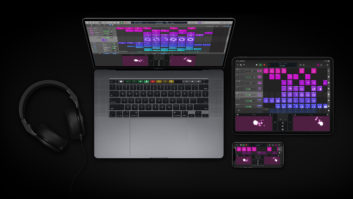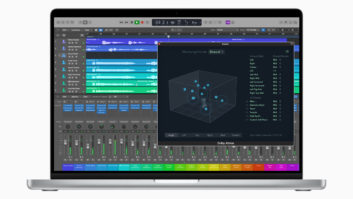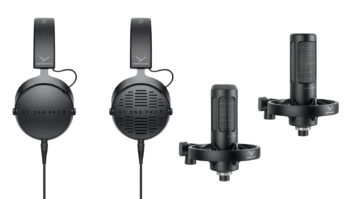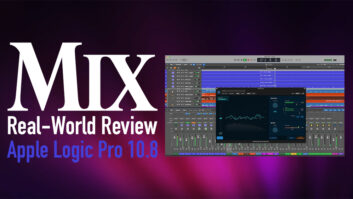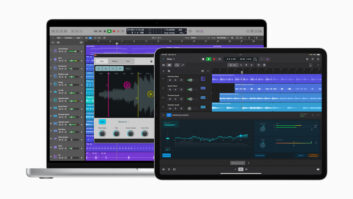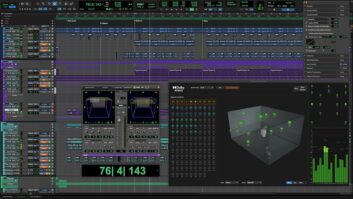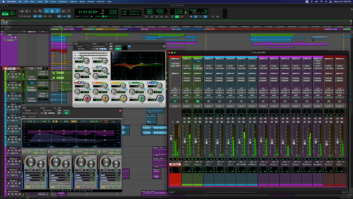Working in 5.1 can be both tremendously exciting and %@#@!! maddening. In the early 1990s, the film industry pushed that excitement into theaters and later handed off the thrills to home viewers via its progeny, DVD. Nearly a decade later, the music industry began to feel the buzz, and despite the internal battle over formats, has now upped the launch cycle for new surround music titles to hundreds a month.
Broadcast? That’s the maddening part.
HBO, Showtime, Starz and other premium channels have been sending out 5.1 signal for some of their hit shows and many of their movies. ABC has tapped in with top-end dramas like NYPD Blue. Meanwhile, others have grabbed the 5.1 spotlight with high-profile, hi-def specials like the Grammys telecast and the Super Bowl (see page 84 and 86, respectively). But how many consumers have really heard 5.1 over their cable or satellite system?
The problem is that NTSC television is still largely a 2-channel analog medium, and it will be for quite some time, the FCC mandate for conversion to digital TV notwithstanding. The solution, Dolby feels, at least for the interim, lies with Pro Logic II, which can matrix-encode six channels of audio and send it down any analog or digital 2-channel pipe.
“Dolby Digital is still our premier multichannel audio technology for DTV broadcast,” says Tom Daily, Dolby marketing director for professional audio. “But in an analog TV station or a stereo cable system, Dolby Pro Logic II allows broadcasters to deliver an enhanced signal. We will always have stereo sources; this is a way to make them sound better.”
Development of Pro Logic II began with the decoder, which was introduced a little over a year ago and now resides in more than 4 million consumer units across the U.S. All A/V receivers shipped with Dolby Digital — virtually all A/V receivers shipped to the States — are now also shipping with Pro Logic II, and Dolby expects penetration to reach 12 million units by the end of the year. Pro Logic II is, as expected, backward-compatible with the nearly 100 million Dolby Surround Pro Logic receivers currently in U.S. homes.
That rapid growth and acceptance prompted discussions for a professional encoder. Last September, the algorithm turned into a concept. By December, it became a project. This month, the encoder makes its debut at NAB.
“What really drives all of this is the DVD, and everybody has to catch up with it,” says Dolby broadcast applications engineer Jim Hilson. “Consumers have 5.1 audio in the home; they go to a theater and have 5.1; they turn on HBO and they get 5.1. In situations where you can’t get the Dolby Digital bitstream, Pro Logic II offers something closer to what consumers already have.”
Hilson adds that, given Dolby’s history with surround processing, “It’s not that much harder to get the extra channel in back. The biggest obstacle,” he says, “is getting enough sound sources from wherever you’re working. You have to put up a few more microphones, put in a bit more time, add a few more faders on the console; basically, some more thought into pre-production and how the elements come together.”
DP563 owners will note that, other than some silkscreens, the unit’s front panel hasn’t really changed. On the back, however, there are six digital ins and two outs (Lt/Rt), 75-ohm unbalanced. Word length on input is 24-bit (when sample-rate converter is turned off), output is adjustable from 16 to 24 bits. The big difference, besides the obvious steering capabilities for the rears, is that the left-surround/right surround are full-bandwidth down to 100 Hz, and the LFE channel ranges from 20 to 120 Hz, ±1 dB.
The immersive effect of 5.1 audio from any 2-channel delivery medium has obvious benefits for the PC market, car audio, radio, CDs, VHS tapes. But perhaps the biggest potential market is games, a multibillion-dollar worldwide industry that is only getting bigger. At the March Game Developers Conference in San Jose, seven of the top 10 titles had multichannel Dolby-encoded content. And because of the way games are produced — where audio is allotted a very limited share of the real estate, drain on the CPU is of big concern, and editors are sometimes the “final” mixers — a matrix-encoded 2-channel delivery system seems to be the ticket. Toward that end, Minnetonka Audio (www.minnetonkaaudio.com) has licensed the Dolby Pro Logic II algorithm for release in a $495 stand-alone PC application or as a VST plug-in, SurCode for Dolby Pro Logic II.
“The beauty of Dolby’s Pro Logic II is that nearly every surround receiver out there has a decoder built in,” says Minnetonka director of marketing John Calder. “It’s like surround for nothing and checks for free. Surround ambiences, sound effects and music stems can all be pre-encoded for delivery within stereo cues, and the resulting mix is stereo-compatible and very effective at engaging the audience.”
The Dolby Pro Logic II software upgrade for existing DP563 owners will be $400. New units with Dolby Surround and Dolby Pro Logic II encoding, expected to ship around August 1, will sell for $3,700. After NAB, Dolby will make white papers, mixing tutorials and equipment setup recommendations available on its Website, www.dolby.com.
